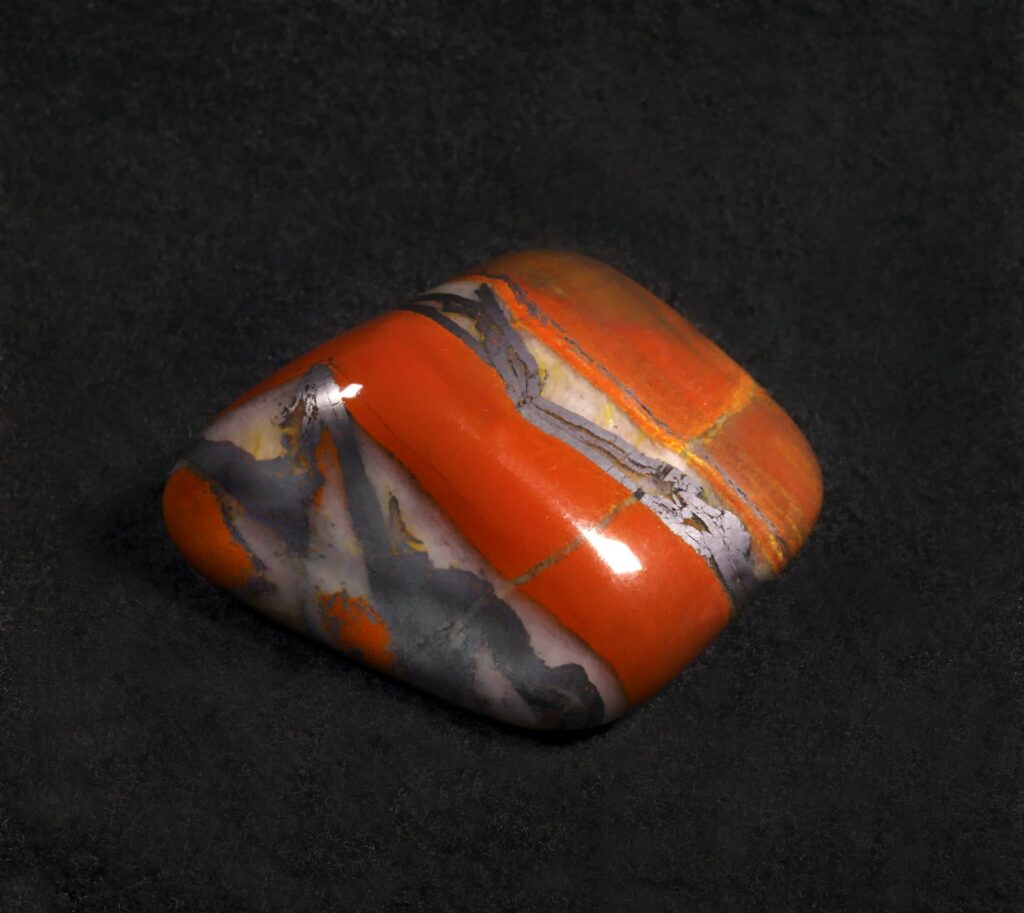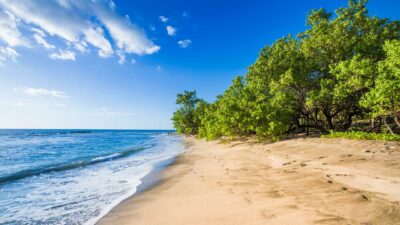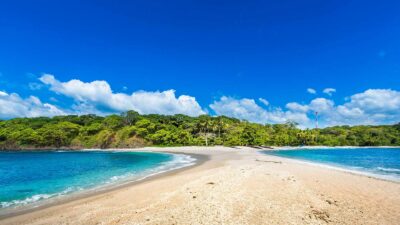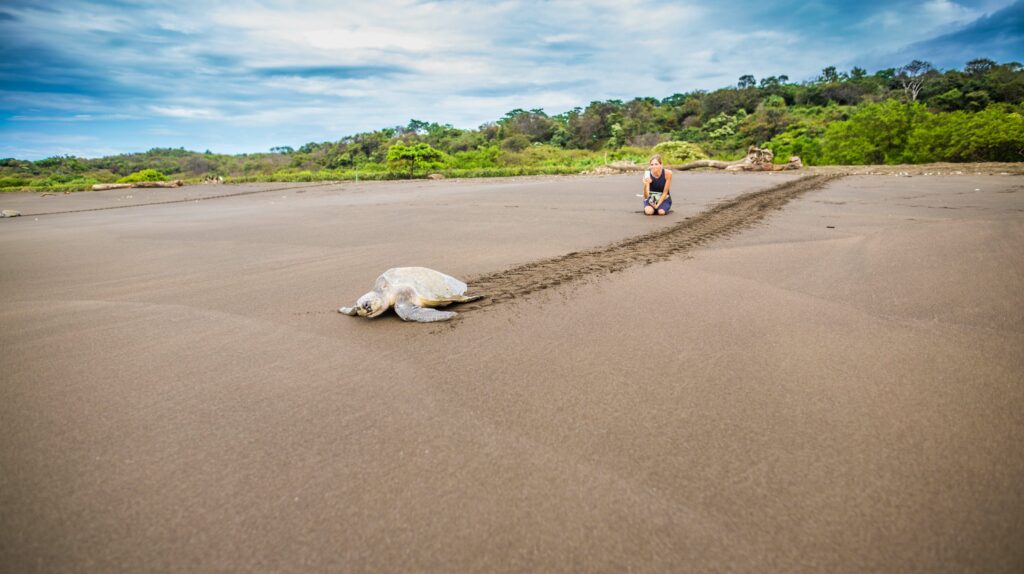Made of 80% silica, the red jasper gets its color from the presence of iron oxide. From vermilion to carmine, the vermeil nuances depend on the exact composition of the ore. The area of Montezuma, at the tip of the Nicoya peninsula, kingdom of beaches, turtles and waterfalls, reveals an orange sedimentary rock. The exploitation of this stone, which is very popular in crafts for the creation of jewelry or statuettes, remains formally prohibited in Costa Rica. Logic in a country that relies on preserving its natural resources and biodiversity. Costa Rican red jasper contains millennia of Amerindian geology and culture. YouCome offers you this walk on the edge of the red gem.

Montezuma: Mother Earth of Jasper
Jasper: a sedimentary, brechic and siliceous rock
Costa Rican Red Jasper comes from a plankton whose skeleton consists of silica (quartz) and lives at pelagic depths (greater than 3,000 meters). Through the diagenesis process, this organic sediment transforms slowly and becomes rocky.
In Montezuma, the red jasper rocks come from marine sedimentations. They date from the Cretaceous period (between 60 and 100 million years ago). Mollusks and other organisms fossilized to form this rock.
This sedimentation process takes several million years.
Brechic: comes from different debris of the same chemical composition.
I want a guide who take mes to Montezuma
Montezuma, on the frontier of tectonic plates
Montezuma is located in the Cocos area. This region is just at the junction of two tectonic plates: the Atlantic and the Pacific. Their frontal movements have created many volcanoes, such as the famous Arenal.
The Earth is a geologically active planet. Consequently, its components undergo continual transformations. This is called rock remobilization. In this case, Montezuma’s red jasper has undergone multiple remobilizations.
Silica remobilized in silica, jasper is a calcedonian cement. In Costa Rica, it is not of volcanic origin.
Visit Montezuma
Small village in the province of Puntarenas, not far from the peninsula of Nicoya, Montezuma is also a treasure for lovers of waterfalls. The Cabo Blanco Nature Reserve, the Danés Trail and El Sueco are just examples of the extraordinary wealth of Costa Rican flora and fauna.
Craft shops along the main road offer handmade bracelets and necklaces. Will you find one made from jasper?
Las Manchas, Las Rocas and Los Cedros offer beautiful sandy beaches. In Santa Teresa, the rocky coastline welcomes you. Feel like scuba diving?
I trust my guide to help me to discover the intimate beaches of Guanacaste.



I prefer to marvel at the nesting turtles.

Costa Rica Red Jasper: a protected natural wealth
Mineral Protection in Costa Rica
Costa Rica, true to its reputation as a protector of the ecosystem, prohibits mining and mineral extraction. Despite some illegally exploited gold veins, Costa Ricans respect and support this policy of preserving natural resources. In fact, their struggle to save Costa Rica dates back to more than 50 years.
Around 30 national parks and 165 protected areas cover 28% of the Globe’s surface and 2.6% of its marine area. 1/4 of the Costa Rican territory (26%) is classified as a protected area.
Choose an experienced and nature-friendly guide to discover the Montezuma red jasper deposits.
The Ticos in peace with nature
Costa Rica is home to 6% of the world’s biodiversity. In the 1980s, the government launched a major reforestation policy. Then in 1997, the country was one of the first to obtain its sustainable tourism label. Today, the forest covers more than half of the country (compared to 19% in 1984).
As evidenced by:
In 2007, President Oscar Arias (1987 Nobel Peace Prize) launched the “peace with nature” program in a country where “the right to a healthy and ecologically balanced environment” is officially enshrined in the constitution. Target: zero carbon emissions by 2021.
What if vacation rhymes with reforestation?
Gold panning* is forbidden here, but if you want to admire a purely Costa Rican craftsmanship, Guaitil pottery is waiting for you.
*Gold mining: artisanal exploitation of gold, by extension of ores.
It is easy to understand that such a strong environmental policy cannot allow the mining of red jasper ore or any other.
Red Jasper: preferred stone among Native Americans and elsewhere
Jasper through Civilizations
The Navajo Indians view, in this bright red, as the blood of Mother Earth. Archaeologists have found bracelets, talismans and amulets to protect against the evil forces of the night. But it’s not the only civilization to worship jasper.
👉 Ancient Greeks offered it to the goddess Gaia to promote the fertility of the Earth and thus the abundance of crops.
👉 The Vikings have embedded the pommel of Siegfried’s sword, the dragon-digger, to give it strength.
👉 Feng Shui sees the harmony of man with his natural environment.
Jasper: a few more about it
Jasper comes in as many versions as it offers colors: the agate jasper oscillates between brown and green, the Biggs jasper has yellow and green bands, the dalmatian jasper is decorated with black dots, etc..
The carmine, vermilion hue found in Costa Rica comes from the presence of hematite, a mineral species composed of iron oxide, traces of titanium, manganese and water.
Associated with the root chakra, it is a protective and anchor stone.
Lithotherapy lends it invigorating and energizing virtues.
The sedimentary composition of this semi-precious stone gives it the virtues of balance and stability.
Less famous than biodiversity, the red jasper stone nevertheless represents a treasure of Costa Rica. In Montezuma, this ore is protected from exploitation but it remains accessible for the pleasure of anyone who knows where to find it 😉 .
